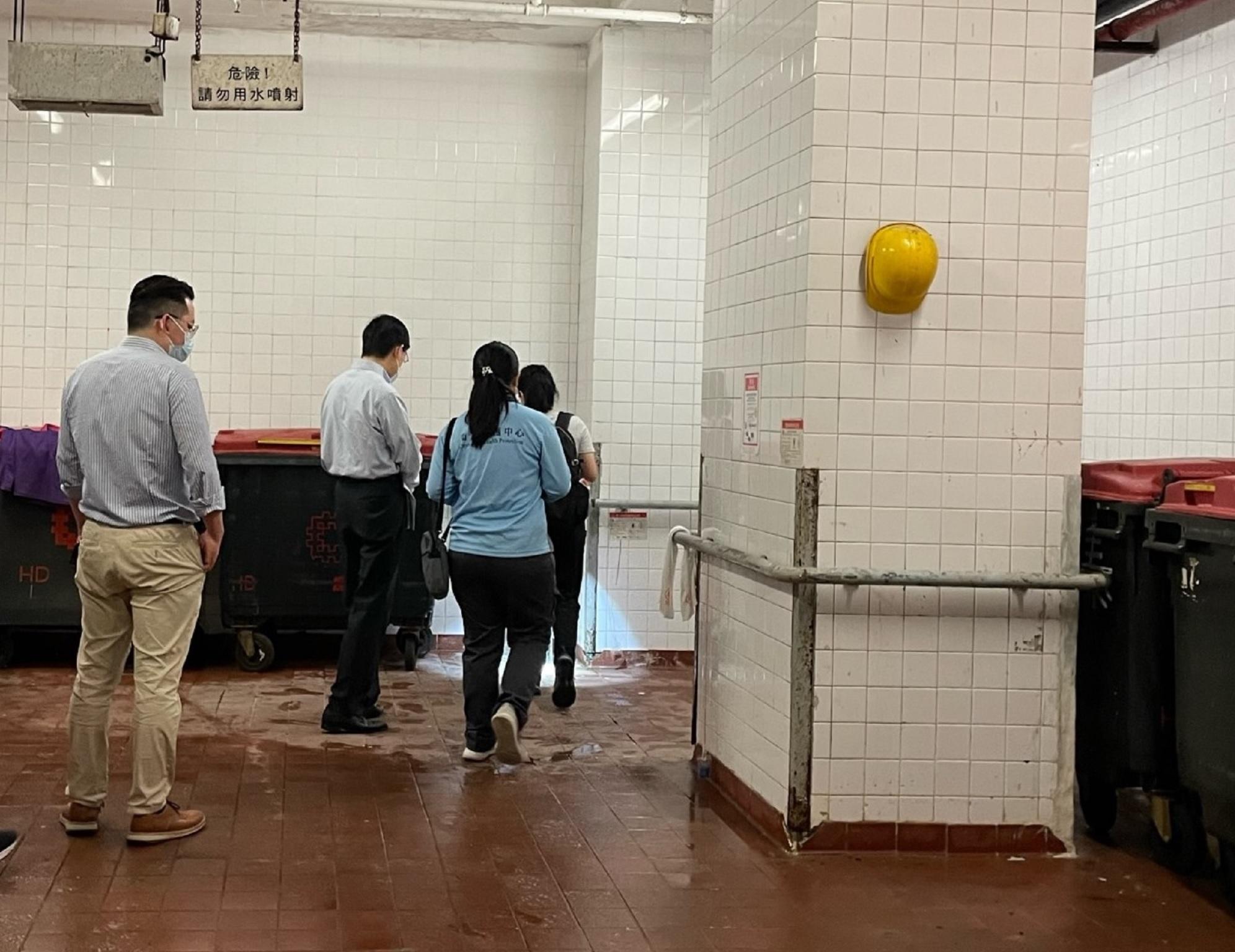CHP follows up on case of human infection of rat Hepatitis E virus (with photos)
********************************************************************************
In response to the case of human infection of rat HEV as announced by the CHP on May 10, the personnel from the CHP and the Pest Control Advisory Section of the Food and Environmental Hygiene Department (FEHD) today visited the place where the patient lives (Tsz Ching Estate, Wong Tai Sin) and the building where he works at (On Tat Industrial Building, San Po Kong) for environmental investigations.
The personnel conducted a site visit to the places concerned to inspect the rodent infestation and environmental hygiene. Accompanied by staff of the Housing Department (HD), the personnel from the CHP and FEHD found some traces of rodents and possible hiding places for rodents in Tsz Ching Estate. The HD has set up rodent traps at the estate immediately in order to further investigate whether the rodents carry HEV. Separately, personnel from the CHP and FEHD also identified significant rodent infestation when they conducted the site visit at On Tat Industrial Building where rubbish are piled up at the rear lane with unsatisfactory environmental hygiene.
The personnel has immediately requested the property management staff to improve the environmental hygiene, and has disseminated rodent control guidelines and management rules as well as provided professional opinions on rodent control to them.
The CHP will continue its surveillance of HEV, including conducting testing on human and rat HEVs in clinical specimens. The FEHD, HD and property management staff of relevant places will continue to strengthen rodent control measures for enhanced effectiveness on anti-rodent.
The HEV is transmitted mainly through the faecal-oral route. However, the exact mode of transmission of rat HEV to humans is still unknown. According to literature, possible routes of transmission include ingestion of food or water contaminated by rodents or their excreta, direct contact with rodents or exposure to environments or objects contaminated by rodents or their excreta.
To prevent Hepatitis E and rat HEV infection, members of the public should maintain good personal, food and environmental hygiene. For example, they should wash hands thoroughly before eating, store food properly or in the refrigerator, not leave food at room temperature for a long time, and use 1:99 diluted household bleach for general household cleaning and disinfection. High-risk individuals, such as elderly persons with a major underlying illness (especially those who have undergone organ transplantation), pregnant women, patients with chronic liver disease and patients with Glucose-6-Phosphate Dehydrogenase Deficiency (also known as G6PD Deficiency), who are infected with HEV may develop a serious illness, so they should exercise extra caution.
In general, rodents (such as rats) can transmit multiple diseases to humans directly and indirectly. The public are advised to adopt the following measures:
- Eliminate sources of food and nesting places for rodents in the living environment. Store food in covered containers and handle pet food properly to prevent it from becoming food for rodents;
- Store all refuse and food remnants in dustbins with well-fitted covers. Dustbins must be emptied at least once a day;
- Keep premises, especially refuse rooms and stairways, clean. Avoid accumulation of articles; and
- Inspect all flower beds and pavements for rodent infestation regularly.
Ends/Friday, May 12, 2023
Issued at HKT 22:02
Issued at HKT 22:02
NNNN







